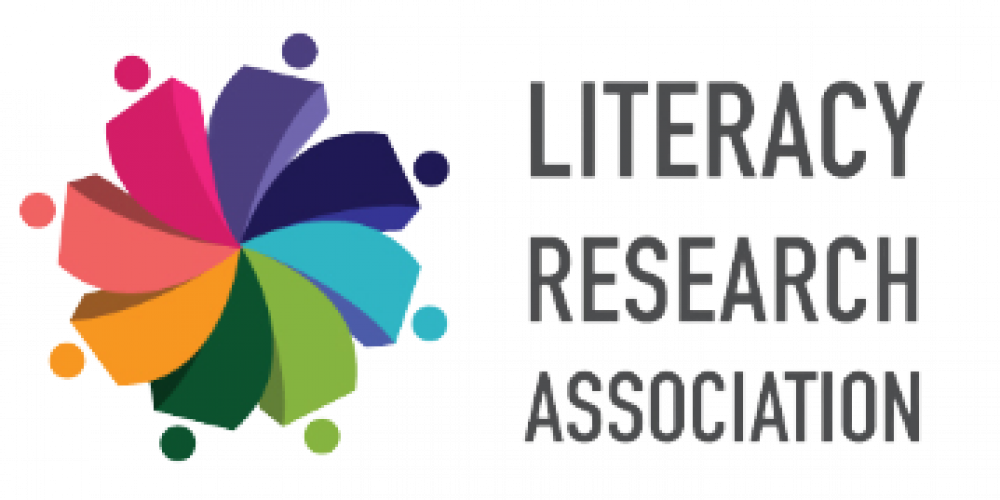The Science of Reading and the Media:
Does the Media Draw on High-Quality Reading Research?
Maren Aukerman, University of Calgary
Recent stories about the “science of reading” in the popular press have often distorted how children learn reading. Reporting can be biased, as my last Critical Conversations piece discussed. But there is another problem, equally grave: reporters telling these stories may have only a partial grasp of reading research. To be fair, developing deep proficiency in a research domain can be elusive and take years of intense study. For example, to report well on astrophysics news, science reporters need more than interest and a grade-school understanding of the scientific method; they require meaningful grounding in astrophysics and its research. The field of reading is no less specialized, involving thousands of scholars using a variety of research methods in robust dialogue with one another. Thus, to report well on developments in reading education, reporters must understand more than just one vocal corner of this research landscape. They should know how the information they communicate connects to a large body of scholarship that frequently includes conflicting findings and scholarly disagreement.
Unfortunately, education journalists frequently fail to meet this bar. In this post, the second of three, I use two recent articles to illuminate 4 error patterns I call errors of insufficient understanding. One, from Time, discussed “an enormous rethink of reading instruction that is sweeping the U.S.”, the push for more phonics. The other, from the New York Times (NYT), reported on updates in a widely used published curriculum called Units of Study, one that the article lambasts as unaligned with the “science of reading” because it is anchored in an approach known as balanced literacy.
Error of Insufficient Understanding 1: Weak Connection to Actual Research
The Time and NYT articles both made claims about reading research, but neither appeared substantively grounded in it. Links provided in both articles mostly take the reader not to peer-reviewed research, an expected standard in scholarship, but to other news articles, podcasts, and/or popular (but not always scholarly) books. Both journalists often relied on the word of “science of reading” advocates, failing to verify those statements against research. For example, The NYT cited a Units of Study critic claiming that the program’s author was “disconnected from research” without clearly situating this as opinion.
By drawing mostly on vociferous advocates of one approach and bolstering their claims primarily with other journalism, journalists create an echo chamber which itself is disconnected from reading research. Indeed, Time cited no individual research studies, even where those would clearly be relevant. For example, it discussed widespread adoption of LETRS training, a professional development program supposedly aligned with the “science of reading;” yet it never acknowledged a rigorous study indicating that LETRS had no positive effect on student achievement, a critical detail from a research-based perspective.
When it is present, coverage of reading research also often fails to pass muster. Both Time and the NYT heavily rely on a research synthesis over twenty years old, the National Reading Panel Report. Indeed, Time laments the ostensible fact that “the National Reading Panel’s recommendations and all the research were so blithely ignored” (again citing a journalist as proof of the claim). The NRP Report is an extensive, important research analysis, but it is far from complete (given research available at that time), up to date (given research conducted since then), or irreproachable (given limitations in methodology and scope). It has been the subject of numerous critiques, including scathing criticism by a participating panel member as well as reanalysis of its findings on phonics that calls those into question. It is fair to call it influential, but false to equate the whole of reading research with this document, to dismiss scholars who fail to fully embrace it as ignoring research, or even to assume “science of reading” advocates and the NRP Report are themselves fully aligned.
Troublingly, Time treated the NRP Report and books from the popular press as the whole research story; it never mentioned individual research studies. The NYT did discuss two studies relevant to its topic – one that observed substantial student gains with a treatment sample of 40 schools using Units of Study and one showing no effects from its use at a single school. The article treated the studies as though they were of equal import and thus inconclusive, with no acknowledgment that the first, far larger in scale, was more robust. Such reporting is not research-aligned.
Recommendation: Ensure that “science of reading” news meshes with up-to-date, varied, peer-reviewed research before accepting its claims.
Error of Insufficient Understanding 2: Inaccurate, Distorted Use of Terminology
Another problem is faulty use of terminology. For example, both articles criticize something they call “cueing” or “three-cueing,” describing it respectively as “a word-guessing method” (NY Times) and “get[ing] children to ask a lot of questions about the word they’re stuck on” (Time). But “cueing” is not an instructional approach, reading technique, or guessing game – except in the minds of certain detractors. What the reporters are likely referring to is something that those who actually use it call the three-cueing system, a framework for analyzing errors to understand children’s decoding attempts.
In fact, educators can use it to identify when a child over-relies on guessing. After identifying the primary nature of children’s errors, teachers can guide them into attending to new information so they no longer need to guess. If a child guesses “mother” in place of “mommy,” the child might be asked to slide their finger under the word to sound it out. A different child, who pronounces “said” so it rhymes with “raid,” might be asked if it makes sense in the sentence – not to replace the child’s phonics-based strategy, but to supplement it. This instructional guidance is not usually called “cueing” by those who use it. Rather, it may be called an interactive strategies approach.
Well-designed instruction based on a three-cueing system analysis of student errors emphasizes tailored, progressively more refined strategies so that, for example, a child over-relying on pictures to decode would not be encouraged to keep using pictures. If a teacher or instructional program nonetheless does that, it is inconsistent with the whole basis of the approach. Some researchers argue that a subset of children need more systematic exposure to phonics than may happen with an interactive strategies approach. But even those critics generally do not characterize the approach as “guessing.” That characterization is unhelpful, polarizing, and false.
This is not the only journalistic misuse of literacy terminology. For example, “balanced literacy” is frequently caricatured as involving little phonics, in contrast with what gets called the “science of reading.” Time explained it as offering “instruction in the link between sounds and letters… sprinkled in with other methods teachers thought worked.” The article wrongly suggested that the defining feature of balanced literacy is teaching idiosyncratic, non-research-based ways of decoding outside of phonics. In reality, advocates of balanced literacy see phonics as integral but also recognize that it should not displace attention to other important things like comprehension and language development, even in the early grades – a position firmly rooted in what reading research suggests. In fact, some educators ascribing to balanced literacy may exclusively teach decoding via explicit phonics instruction (not interactive strategies).
Recommendation: Be aware that “science of reading” news may contain distorted information and wrong use of terminology: do not take accuracy for granted.
Error of Insufficient Understanding 3: Spurious Claims that One Approach is Settled Science
The NYT article argues that one particular approach to teaching decoding, called systematic phonics, “is the most effective way to teach reading,” and the Time article conveys a similar message. One can certainly make a strong case for such instruction , but the research terrain is complex: some analyses of phonics-intensive approaches, including studies of the much-touted Orton-Gillingham approach and the aforementioned LETRS program, have found no positive effects. Moreover, little research examines whether systematic phonics ultimately improves comprehension, which is arguably the gold standard; studies that do examine this have failed to find clear benefits. In short, there is insufficient evidence to conclude that any single approach, including the particular systematic phonics approach often elided with “the science of reading,” is most effective.
The NYT not only insists that the type of phonics pushed by many “science of reading” advocates is the “most effective;” it also maintains that interactive strategies approaches – wrongly called “three-cueing” – don’t work. The actual evidence there is also more nuanced: for example, while one study suggests that gains associated with interactive strategies fade over time , another found positive effects even 10 years post treatment. Moreover, journalists often have a double standard, pointing out the current lack of evidence for the long-term efficacy of interactive strategies approaches but staying mum about a corresponding dearth of evidence regarding the longitudinal efficacy of more exclusively phonics-based approaches.
Worth noting, too, is that what gets called the “science of reading” is in no way analogous to the science of climate change, where 97% of scientists agree. Nearly 57% of education professors favored balanced literacy in a recent survey, with only 22% favoring systematic phonics. The press should be asking why buy-in by researchers is so low rather than accepting on faith that the minority position is the research-based one; few journalists appear to be doing so.
But beyond that, a genuinely research-based science of reading must be rooted in a scientific process – ways of engaging with the known, posing questions, and reconciling complexities – more than it is about adhering to fixed knowns. Disagreement is vital. This does not mean anything goes: reading researchers examine goals, what can be extrapolated from different measures, how research should be designed, whether research is generalizable to a larger sample of children, and what implications are valid. But it is a misrepresentation of research to treat it as fixed knowledge handed down by irrefutable researchers: this is perhaps what “science of reading” advocates within and outside the press get most wrong. Indeed, someone who denies the role of research-based dialogue is not a scientist at heart, but rather an ideologue.
It could be different. Early literacy researchers investigate many things. For example, there is likely a limit to how much phonics instruction children should receive. Phonics skills instruction alone produces less benefit than splitting time between skills instruction and practice in applying those skills to real texts; 25 or 30 minutes of targeted skills daily may be the sweet spot , which is pretty close to the average of what teachers already report doing. Other scholars argue against one-size-fits-all solutions: stronger initial decoders in first grade benefit from less phonics instruction even as peers who begin the year with fewer of such skills benefit from more.
And other things similarly remain contested: how to make phonics instruction more engaging and effective ; whether to teach phonics beyond first grade, given diminishing returns ; what kinds of texts should be used with emergent readers ; how much phonics should be “pushed down” into kindergarten when earlier does not mean better in developing reading ; and so on. Researchers do have varied opinions on whether interactive strategies instruction contributes enough to warrant teaching it. But that disagreement is not the only or even arguably the most important debate.
Intelligent, informed people can disagree about these issues. Reading researchers regularly seek to persuade other researchers without dismissing those who see things differently as not listening to science. And adjusting one’s approach as one becomes persuaded of the need, as was done when the Units of Study update incorporated more phonics, is a mark of thoughtful engagement with research, not a “major retreat” (as per the NYT article).
Recommendation: Be skeptical of “science of reading” news that touts “settled science,” especially if such claims are used to silence disagreement.
Error of Insufficient Understanding 4: Lack of Context about Previous Phonics Implementation Attempts
The NYT notes that Units of Study is being dropped in Oakland, apparently because critics believe that its less phonics-intensive approach has not seen enough success. The article does not mention that Oakland previously used a phonics-heavy program, Open Court Reading , introduced there in 1998 with similar media fanfare to the current hoopla. The Time article does bring in a historical perspective after a fashion, quoting an Oakland-based “science of reading” advocate who claimed that the previous Open Court implementation there had led to strong reading gains before it was abandoned. But Time failed to discuss actual research on Open Court. In point of fact, there is evidence that Open Court actually had a negative effect on many kids’ reading, particularly as kids aged up and encountered complex, harder-to-understand text.
The idea that phonics can fix children’s reading ills is at least 70 years old, yet results from other large-scale phonics reforms have also yielded disappointing results, including during the Reading First era in the U.S. and as England’s recent national curriculum mandates have played out. And Canada, which has relied mostly on a holistic, less phonics-intensive approach, has generally had excellent reading scores in international test comparisons. Both historical and international comparisons unravel the narrative that systematic phonics is a do-all fix.
Recommendation: Consider whether “science of reading” news acknowledges the uninspiring track record of real-world phonics-intensive initiatives.
These four kinds of errors show up in numerous “science of reading” articles in the popular press beyond the two analyzed here. Particularly in combination with media bias errors, they do real harm. In my final contribution to this Critical Conversations series, to be released in the coming weeks, I will discuss some of these consequences.
Please cite this work: Aukerman, M. (2022) The Science of Reading and the Media: Does the Media Draw on High-Quality Reading Research? Literacy Research Association Critical Conversations. CC BY 4.0 license.
Maren Aukerman is a Werklund Research Professor at the University of Calgary who focuses on literacy education and democratic citizenship. She studies educational ethics, how youth engage with information in the media, and the preparation of students for responsible citizenship and democratic dialogue, particularly in the context of literacy education. Aukerman previously was on the faculty at Stanford and the University of Pennsylvania and is the recipient of a National Academy of Education/Spencer Postdoctoral Fellowship as well as the 2009 Albert J. Harris Award and the 2018 Dina Feitelson Research Award from the International Literacy Research Association. In her current work, she is studying how young people make sense of COVID-19 information that they encounter, with a special emphasis on what they do and do not find trustworthy as information sources.
Photo by Jessica Ruscello on Unsplash






